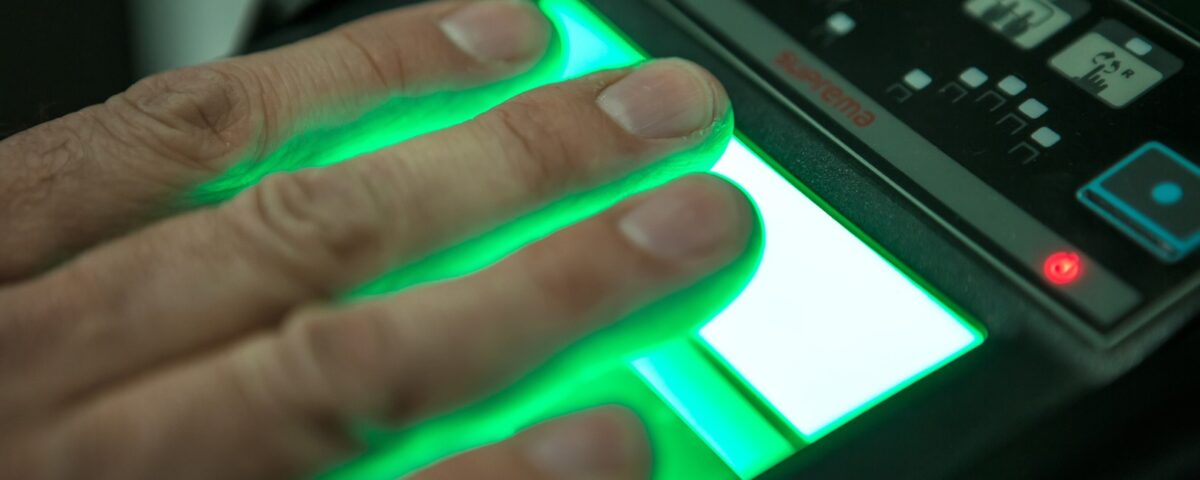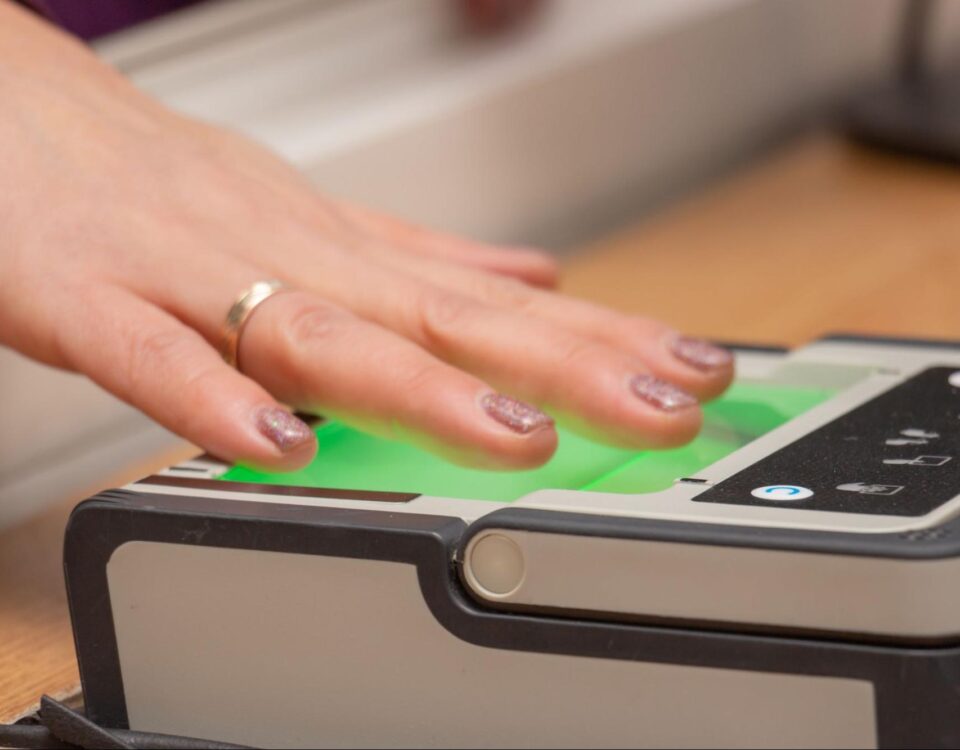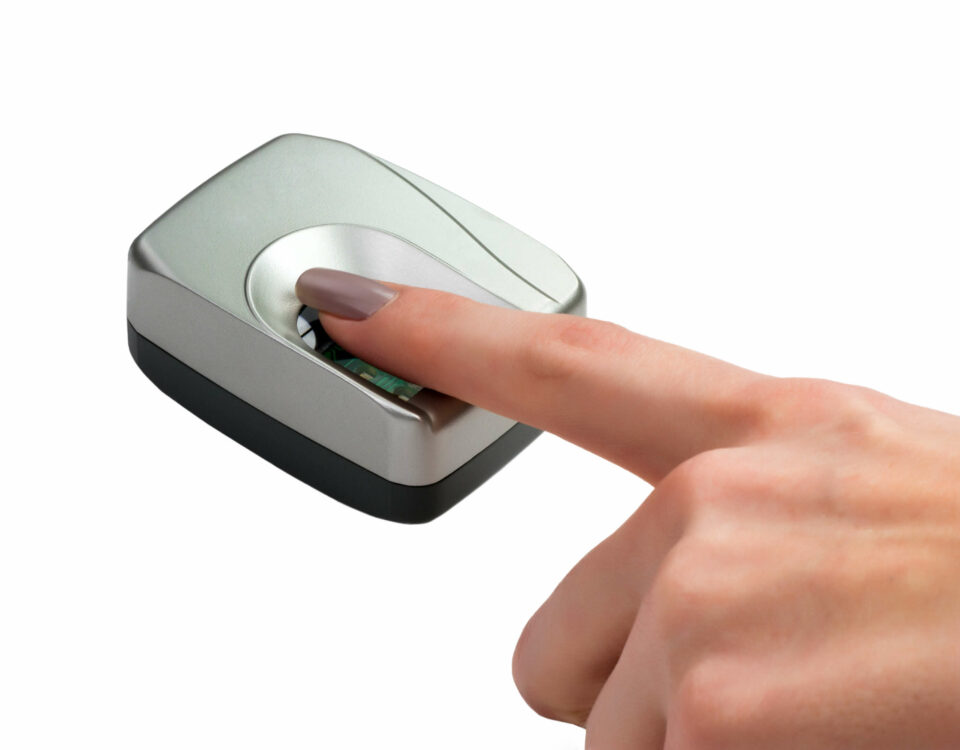Biometric Technologies for Law Enforcement: What are the Best Options and Application Scenarios?

We are living in a world where cyber threats and other fraudulent activities are taking place every day. Therefore, biometric technology has become an indispensable tool for law enforcement institutions, including penitentiaries and police agencies, worldwide. With the help of biometric markers such as fingerprints, palmprints and iris patterns, these agencies can strengthen security, make classified operations simpler and improve overall investigative capabilities.
In this article, we will discuss the essence of biometric technologies, enumerate specific application cases and provide examples of durable biometric devices.
Police departments
Biometric technology has significantly enhanced the capabilities of police departments, altering various aspects of their operations:
Officer identification: By verifying the identity of officers through biometric authentication, departments can ensure that only these officers who have the right to be at a particular zone have access to it.
Evidence collection and analysis: Fingerprint and DNA analysis have long been essential tools in criminal investigations. By collecting and analyzing biometric data from crime scenes, investigators can identify suspects with greater ease. Biometric tablets that have an optical fingerprint sensor prove to be a great option for this matter as they provide speed and accurate data identification.
Patrol and surveillance: Mobile biometric devices have given field officers the power to capture and analyze biometric data on the go. These devices help conduct background checks during arrests, traffic stops or other field operations.
Criminal identification and tracking
By rapidly comparing fingerprints collected from crime scenes to those stored in databases, investigators can quickly identify potential suspects, even in complex cases where traditional methods might not be enough. This technology has significantly accelerated the pace of criminal investigations and improved the accuracy of identifications.
Iris recognition is another great way to identify suspects, as the patterns of the iris are unique and can hardly be replicated. For this matter, both single-iris and double-iris scanners can be used, as they can quickly and accurately identify the person in a contactless way.
Border control
Border control institutions have been using biometric technology to authenticate the identity of travelers and detect forged documents. By comparing the biometric information on the passport to the live individual (liveness check), border agents can quickly verify the authenticity of the document and the identity of the holder.
Investigative tools
Portable biometric devices allow law enforcement officers to capture high-quality images directly at the scene of a crime. This immediate data capture enables faster analysis, comparison and matching, accelerating the identification of suspects and victims. Such mobile identification gadgets are durable, waterproof and can be powered via USB.
Penitentiaries
Biometric recognition systems are used to accurately identify inmates, as well as limit access to specific areas within the penitentiary, ensuring that only the right employees can enter restricted zones. In addition, by collecting biometric markers—like fingerprints or palmprints—at entry points, officials can also confidently confirm a visitor’s authorization to see inmates. These same systems also offer real-time tracking of individuals as they move through the premises, ensuring top-class security.
What to look for in a reliable biometric device
When choosing a scanner for law enforcement use, it is important to consider factors such as:
- FBI certification: This ensures that the scanner meets the highest standards for accuracy and reliability.
- Speed and accuracy: A fast and accurate scanner can help to improve efficiency and reduce errors.
- Durability: A durable scanner will be able to withstand the wear and tear of daily use.
- Ease of use: A user-friendly scanner will be easy to operate for both trained personnel and the general public.
- Cost: The scanner should be affordable and cost-effective.
Biometric Supply offers a variety of fingerprint scanners that are suitable for government use. Some of the best options include:
- DigitalPersona 5300: This high-speed scanner is FBI-certified and ideal for large-scale enrollment and identification operations. This particular scanner has the ability to recognize spoof fingerprints.
- Integrated Biometrics Kojak: This compact and durable scanner is also FBI-certified and offers fast and accurate fingerprint capture. It guarantees excellent fingerprint scanning even when fingertips are dry, rough or dirty due to its proprietary Light Emitting Sensor (LES) technology.
- Xperix RealScan-D: Another FBI-certified scanner, this versatile device can capture both civil ID flats as well as full criminal ten-print flats. It is suitable for capturing both flat and rolled fingerprints, and can also support kiosk applications.
Final Notes
Biometric solutions are becoming increasingly sophisticated and widely adopted across various sectors and the law enforcement domain is no exception. Government agencies and police departments deal with various threats, therefore, a reliable system that helps identify lawbreakers is an inseparable part of officers' daily tasks working in different locations from detention centers to field operations. Biometric Supply offers numerous options, suitable for different biometric modalities to reinforce security anytime anywhere.




